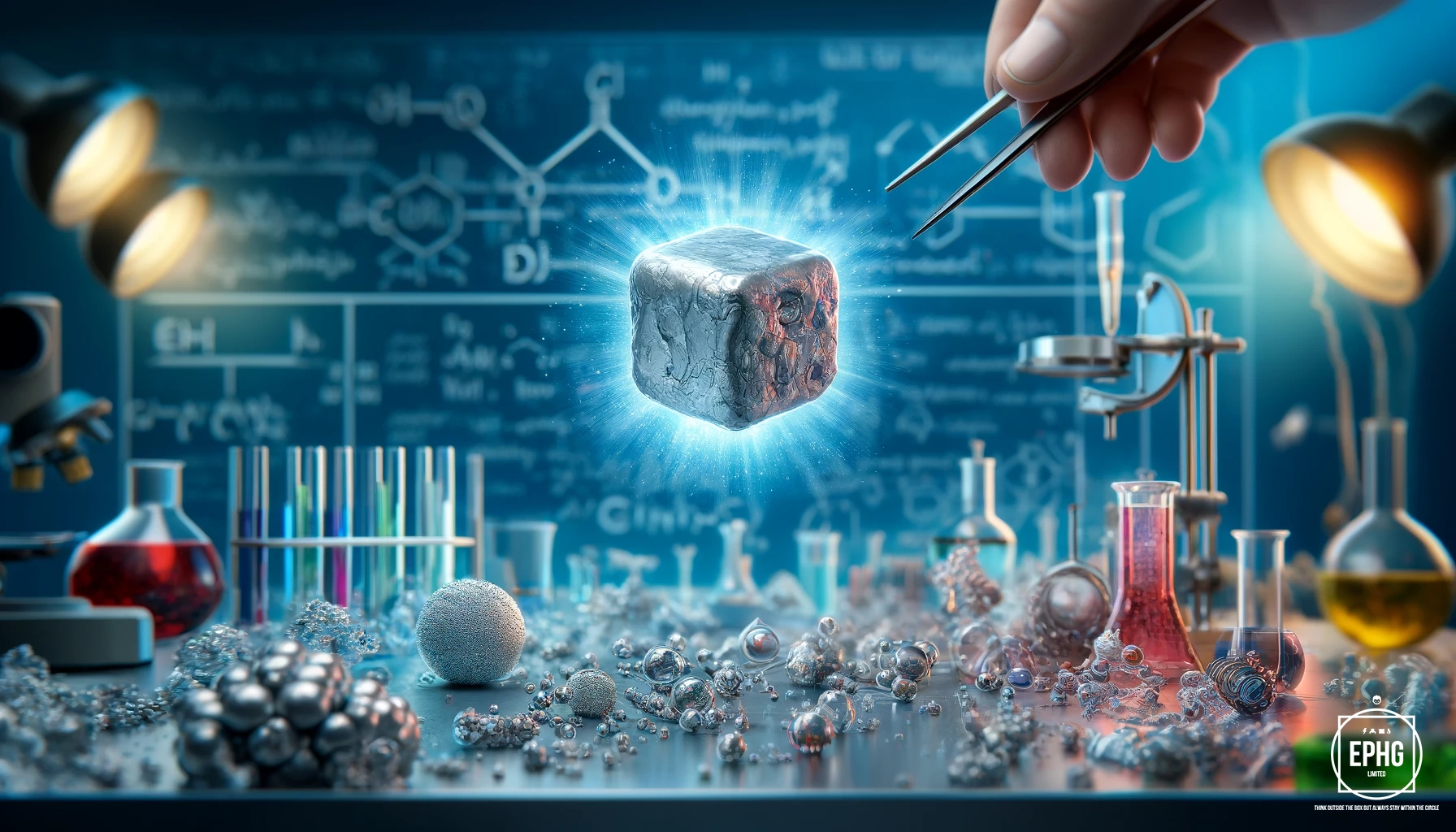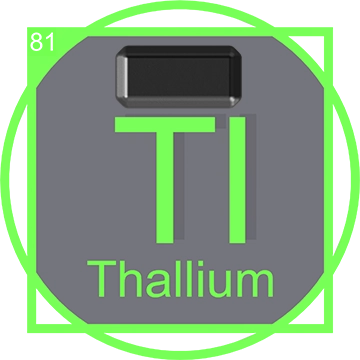Thallium (Tl): An In-Depth Look at Its Discovery, Properties, and Applications in Technology
Thallium, symbol Tl, is a chemical element known for its softness and malleability, which belies its toxicity and versatility in various applications. This article explores the fascinating aspects of thallium, from its discovery and position in the periodic table to its scientific characteristics and diverse technological uses.
Discovery of Thallium

Thallium was discovered in 1861 by Sir William Crookes, an English chemist and physicist. He first observed thallium spectroscopically as a green line in the flame, which led to the element's name, derived from "thallos," the Greek word for "green twig." Crookes and French chemist Claude-Auguste Lamy independently isolated the metal almost simultaneously the following year, marking a significant advancement in the field of chemistry and spectroscopy.
Thallium in the Periodic Table
Located in group 13 of the periodic table, thallium is a post-transition metal that bridges the gap between the metals and metalloids in the periodic system. With an atomic number of 81, thallium is noted for its physical properties which resemble lead, albeit being more malleable and less abundant. Thallium's placement in the periodic table underlines its unique chemical behavior, which is crucial for its various applications in modern technology.
Physical and Chemical Properties of Pure Thallium

Pure Thallium is distinguished by its softness and a low melting point among metals, making it unique in its category. It appears silvery-white when freshly cut but tarnishes to a bluish-gray color as it oxidizes in air. Chemically, pure thallium is highly reactive and shows significant corrosive behavior in the presence of air and water, leading to the formation of thallium oxide. This metal has several isotopes, among which thallium-204 is the most stable and naturally occurring. Additionally, thallium's compounds exhibit fascinating photoelectric properties that are useful in scientific instruments. Thallium's reactivity also extends to its ability to form alloys with other metals, enhancing its utility in various industrial applications.
Thallium Mining Practices

Thallium is primarily extracted from sulfide ores and as a byproduct of refining heavy metal sulfide ores, particularly those containing zinc and lead. The mining of Thallium involves both underground and surface mining techniques, depending on the geology of the mineral deposit. Due to its rarity and the dispersed nature of its occurrence, Thallium mining requires precise geotechnical engineering to efficiently extract ore while minimizing environmental impact. Thallium's toxic properties necessitate strict adherence to safety protocols to protect workers and prevent environmental contamination during the extraction and processing stages.
Applications of Thallium in Technology
Electronics and Semiconductors with Thallium

In the realm of electronics, thallium is utilized to produce highly refractive glasses and special lenses that are integral to advanced optical systems and infrared detectors. These materials, featuring thallium's unique optical properties, are crucial for enhancing clarity and performance in high-tech equipment. Furthermore, thallium sulfide's exceptional sensitivity to infrared light makes it an excellent material for photodetectors and photocells, widely used in security systems and night vision technologies. Thallium’s contributions to semiconductor technology extend to improving the efficiency and functionality of various electronic devices.
Medical Applications of Thallium

Thallium radioactive isotopes, such as thallium-201, play a crucial role in diagnostic medicine. Thallium-201 is used in nuclear medicine, specifically in stress tests that help diagnose coronary artery diseases. Its ability to mimic potassium allows it to provide critical information about cellular activity in the heart muscle.
Environmental Monitoring and Remediation with Thallium
Thallium compounds are employed in environmental monitoring equipment to detect toxic gases and pollutants. Additionally, research into thallium's ability to remove heavy metals from water and waste streams highlights its potential in environmental remediation technologies.
High-temperature Superconductivity and Thallium
Thallium-based materials are significant in the development of high-temperature superconductors. These superconductors are used in various applications, including magnetic resonance imaging (MRI) and nuclear magnetic resonance (NMR) spectrometers.
Thallium's Impact on Health and Safety

Despite its utility, thallium is a potent toxin, with exposure potentially leading to severe health issues such as neurological damage, hair loss, and even fatal poisoning. Handling thallium requires strict safety measures, including the use of protective gear and proper ventilation systems, to avoid contamination and minimize the risk of poisoning. Its historical use in rat poison and insecticides, although now significantly restricted, highlights the chemical's inherently toxic nature. This background has also led to regulations ensuring careful monitoring and control of thallium use in industries and laboratories to prevent environmental and human exposure.
The Future of Thallium

This wide image offers a visionary glimpse into the future, specifically focusing on the technological applications of Thallium 100 years from now. The scene is set in an advanced laboratory environment, where Thallium plays a pivotal role in the development of groundbreaking technologies. Featured prominently are ultra-modern, sophisticated devices such as Thallium-based superconductors, sensors, and diagnostic machines. These technologies interact with holographic interfaces and robotic systems, showcasing Thallium's transformative potential across electronics, medicine, and environmental science. The depiction captures a highly advanced technological landscape, highlighting the innovative use of Thallium in future applications.












